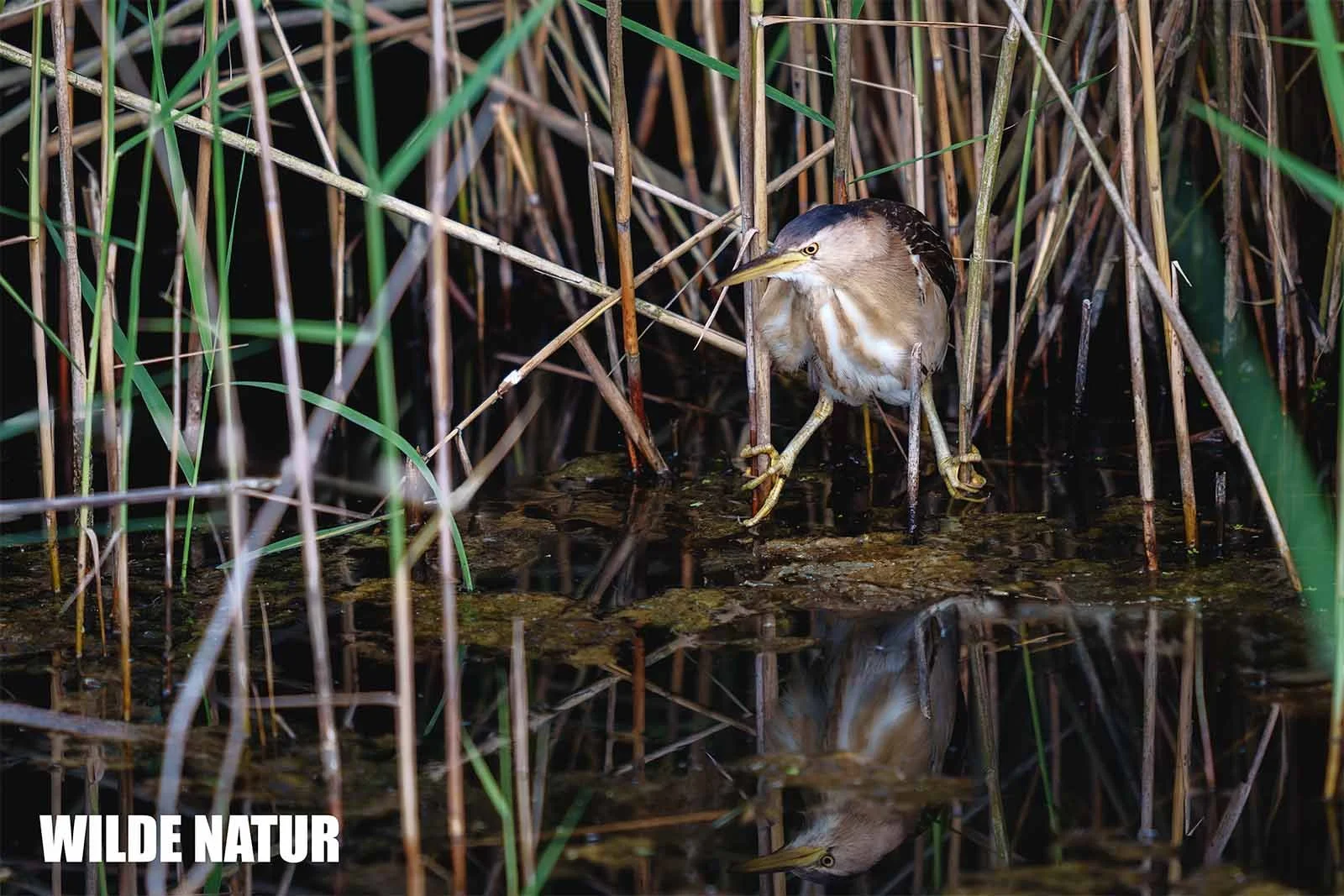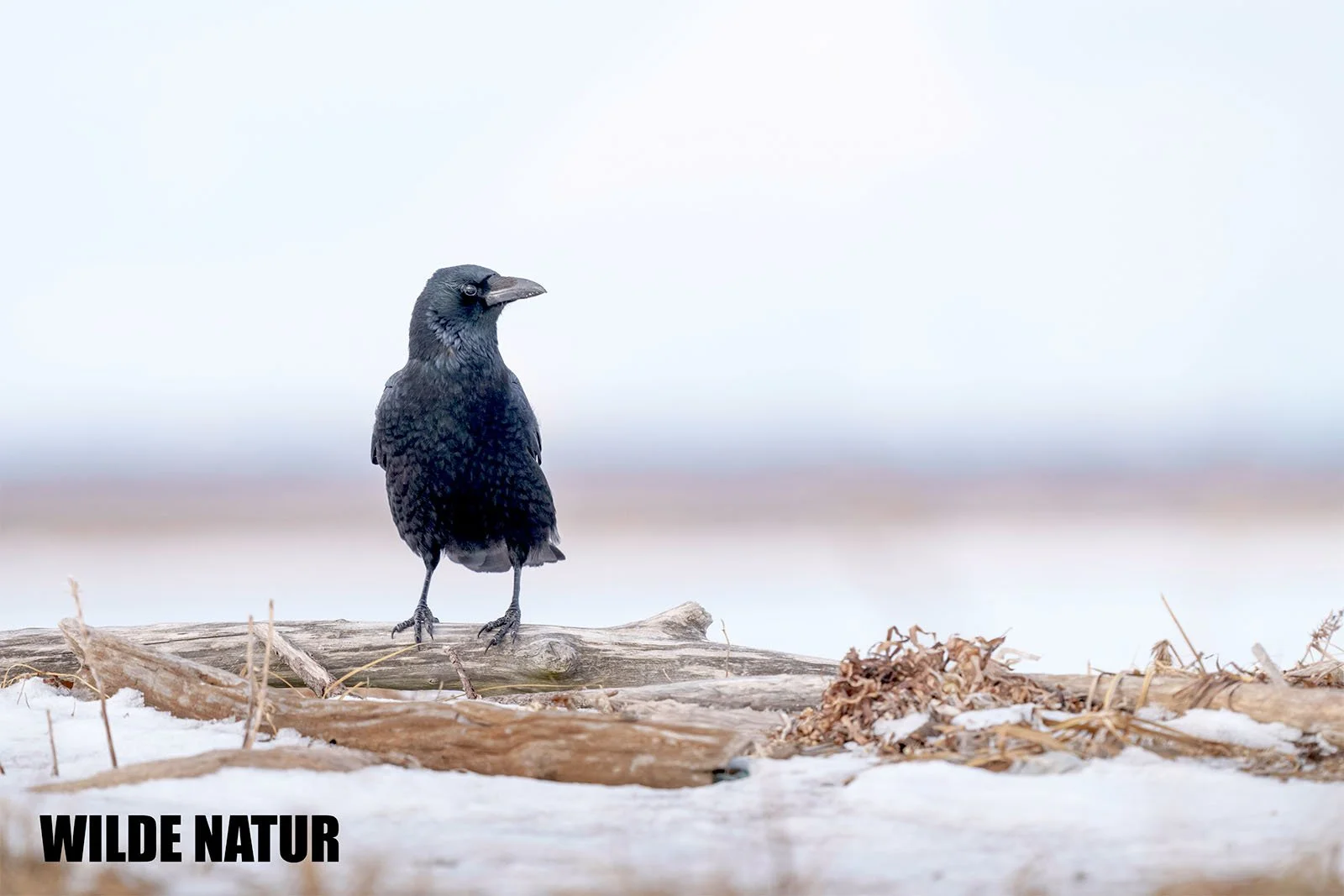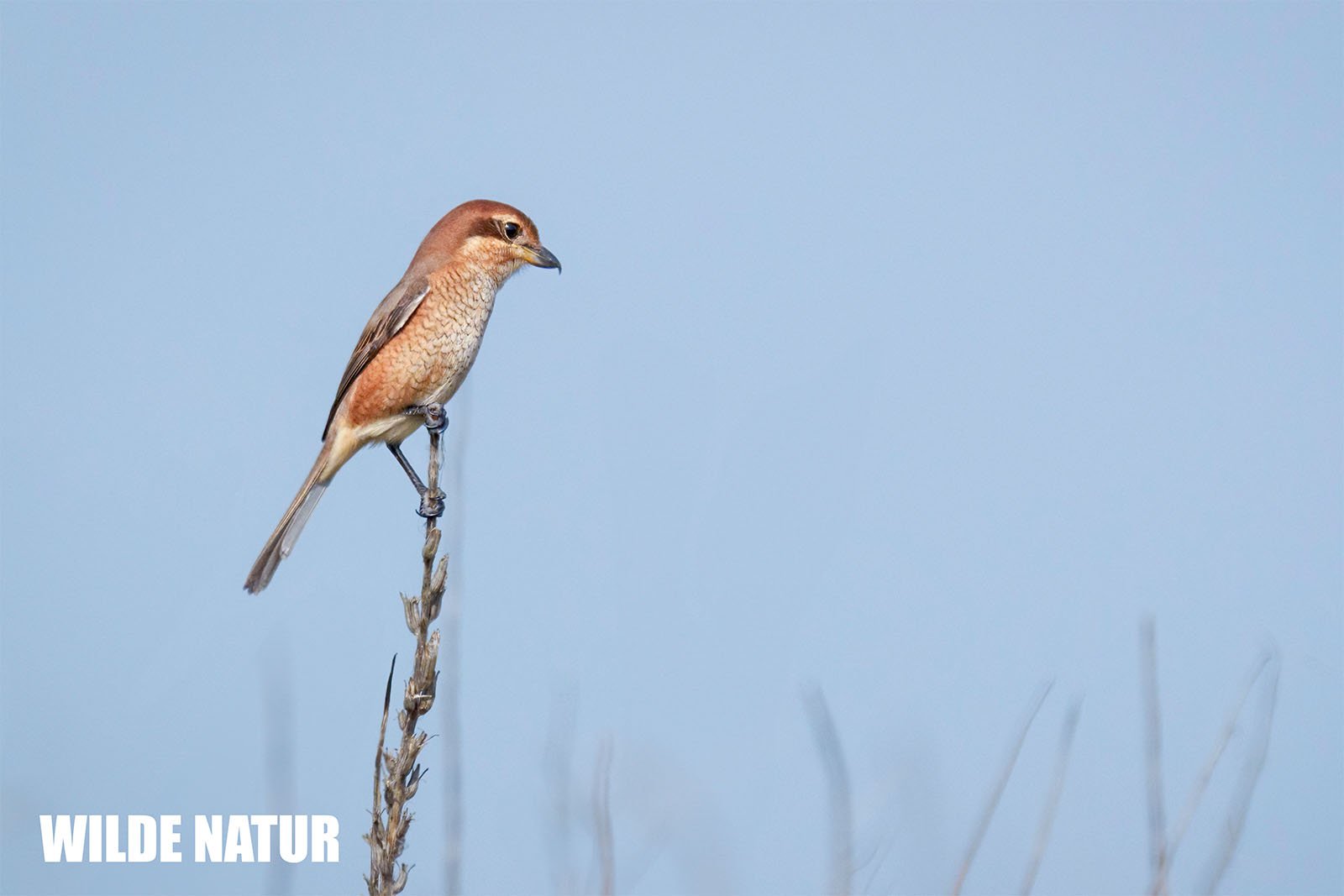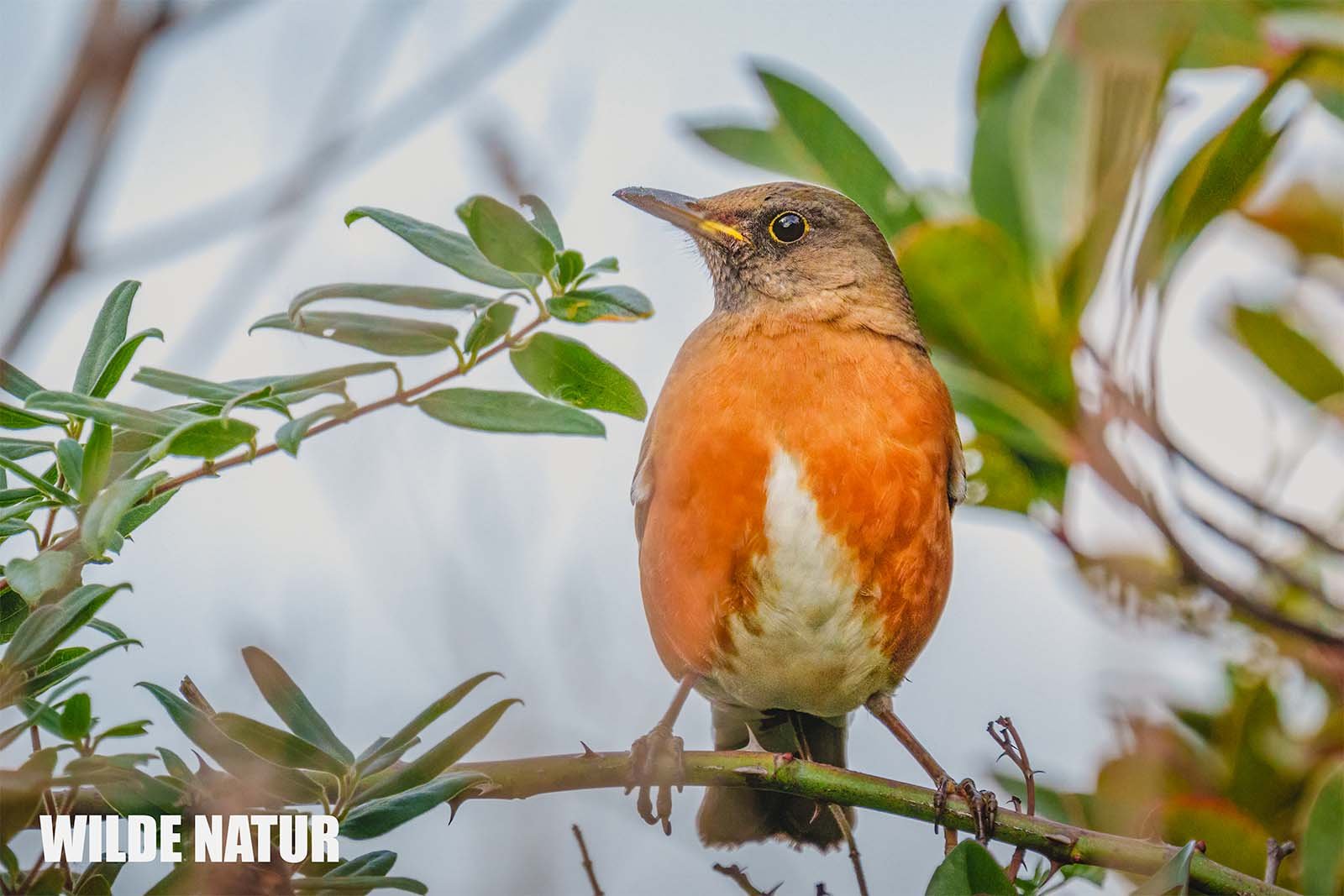Willow tit (Poecile montanus)
Willow tit (Poecile montanus) perches on a bare branch in warm light. Hokkaido / Japan
Willow Tit - The Silent Craftsman of the Forest
The Willow Tit (Poecile montanus) is a quiet but skilled forest dweller. Known for carving its own nesting cavities, it thrives in damp, old-growth woodlands across Japan.
Shortlist
Small, calm member of the tit family
Distinct black cap and pale face
Builds its own nest cavities in rotting wood
Stores seeds in autumn to survive winter
Year-round resident in forested areas
Scientific Name: Poecile montanus
English Name: Willow Tit
German Name: Weidenmeise
Length: 12–13 cm
Weight: 11–13 g
Plumage: Black crown, white cheeks, gray-brown back
Diet: Insects, spiders, seeds – caches food
Breeding Season: April to June
Clutch Size: 5–8 eggs
Nest Site: Self-carved cavities in deadwood
Year-Round Behavior: Resident, does not migrate
Habitat: Moist deciduous/mixed forests with dead trees
Conservation Status: Not endangered, but locally declining
Table of Contents
- Introduction
- Appearance
- Habitat
- Diet
- Breeding
- Behavior
- Year-Round Patterns
- Conservation and Population
- Species Overview
- FAQ – Common Questions
Introduction
The Willow Tit doesn’t seek the spotlight. While its relatives flit and call loudly, this small bird keeps to itself. It doesn’t just find tree cavities – it makes its own. With quiet determination, it builds, hides, and survives in old forests rich in deadwood. It’s a master of subtle survival.
Appearance
Small and round, the Willow Tit is built for subtlety rather than flash. But a closer look reveals a bird finely tuned to forest life.
Key Features:
- Crown and nape: deep black, like a little cap
- Face and underside: pale cream to white
- Back and wings: gray-brown, softly patterned
- Throat: small black patch, duller than in Marsh Tit
- Bill: short and black
- Legs: bluish-gray
It looks similar to the Marsh Tit, but its softer coloring and calmer presence set it apart.
Habitat
In Japan, the Willow Tit lives on all four main islands, especially in the north and at higher elevations.
Preferred environments:
- Moist deciduous and mixed forests
- Coniferous woods with rotting logs and stumps
- Forest edges, open mountain woods
- Old urban parks (especially in winter)
It favors areas with willows, alders, or birches, where it can find both food and nesting material.
Diet
The Willow Tit has a seasonal feeding strategy:
Spring and Summer:
- Insects
- Caterpillars, beetle larvae
- Spiders
Autumn and Winter:
- Seeds from trees and herbs
- Stored caches hidden in bark crevices or under moss
This makes it an efficient food cacher, able to endure long winters without relying on feeders.
Breeding
Breeding occurs from April to June. Unusually for a small songbird, the Willow Tit excavates its own nesting cavity, usually in soft, rotting wood.
Nesting details:
- Cavity carved by both sexes
- Nest lined with moss, hair, plant fibers
- Clutch of 5–8 eggs
- Incubation: ~13–15 days
- Fledging: ~18–20 days after hatching
Nests are hard to spot – but if you listen carefully, the peeping of chicks can reveal one.
Behavior
Much quieter than other tits, the Willow Tit has a reserved nature:
- Forages calmly and methodically
- Often seen hanging upside down on branches
- Usually alone or in pairs
- Rarely interacts with mixed-species flocks
It behaves like a careful carpenter, dedicated to its routine in the shadows of the forest.
Year-Round Patterns
The Willow Tit is a resident bird and stays in the same general territory throughout the year.
In winter:
- May approach human settlements if old trees or feeders are available
- Remains quiet and unobtrusive, even in cold weather
Its consistency and low profile make it a stable, if often overlooked, member of the forest ecosystem.
Conservation and Population
In Japan, the Willow Tit is currently not endangered. However, its future depends on forest management.
- Needs old, natural forests with deadwood
- Declines in intensively logged or managed woodlands
- Cannot nest without suitable decaying trees
Protecting mature forests ensures the survival of this unique and self-reliant bird.
Species Overview – Willow Tit
| Feature | Description |
|---|---|
| Scientific Name | Poecile montanus |
| English Name | Willow Tit |
| German Name | Weidenmeise |
| Length | 12–13 cm |
| Weight | 11–13 g |
| Plumage | Black cap, white cheeks, gray-brown back |
| Diet | Insects, spiders, seeds – caches food |
| Breeding Season | April to June |
| Nest Site | Self-excavated cavities in decaying wood |
| Clutch Size | 5–8 eggs |
| Year-Round Behavior | Resident, year-round visibility |
| Habitat | Damp forests with deadwood |
| Conservation Status | Not endangered, but locally declining |
FAQ – Common Questions About the Willow Tit
1. How do I recognize a Willow Tit?
Look for a black cap, pale cheeks, calm behavior, and a quiet presence in old forests.
2. How is it different from the Marsh Tit?
The Willow Tit has a duller black bib and carves its own nest cavity. Its call is also quieter and less frequent.
3. When does it breed?
From April to June. It creates its own nesting hole in soft, decaying wood.
4. What does it eat in winter?
Seeds it collected and stored in autumn – hidden in bark, moss, or under leaves.
5. Is it at risk?
Not currently. But it declines in managed forests without enough deadwood. Habitat preservation is key.





















